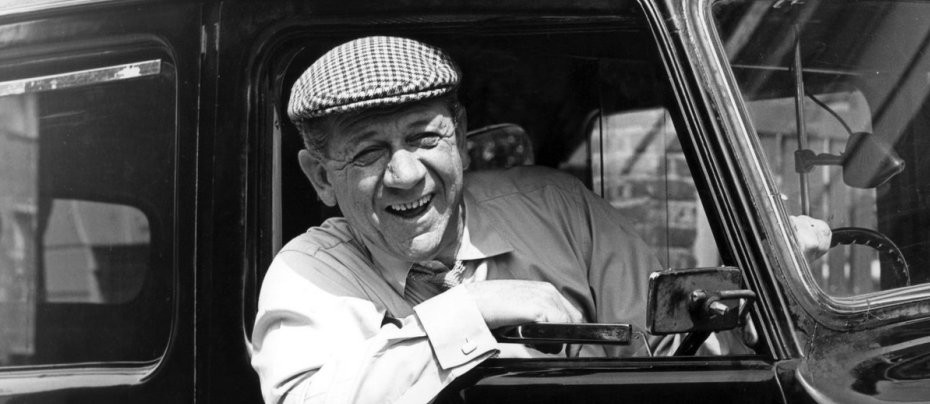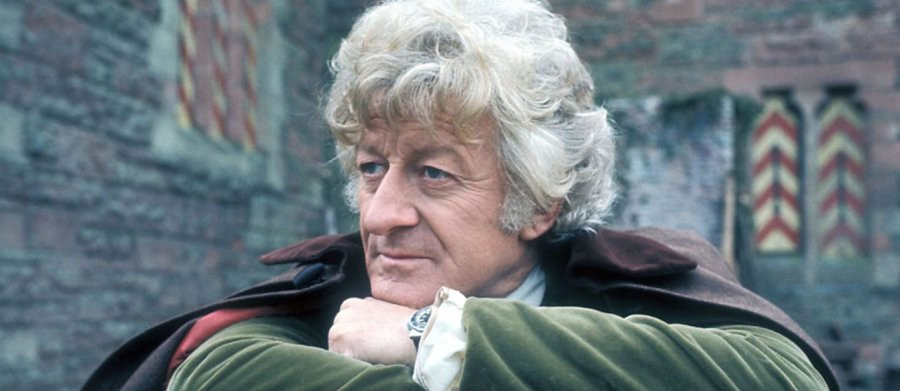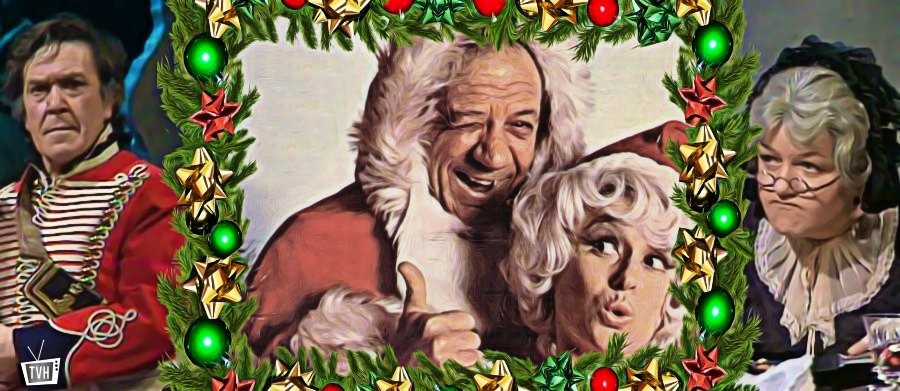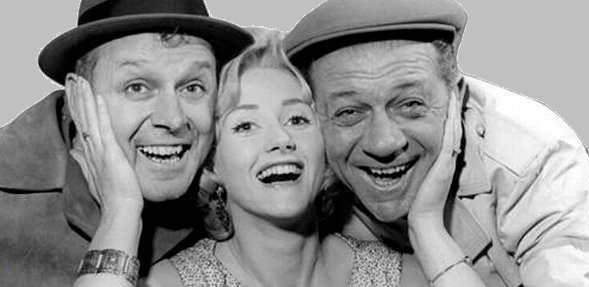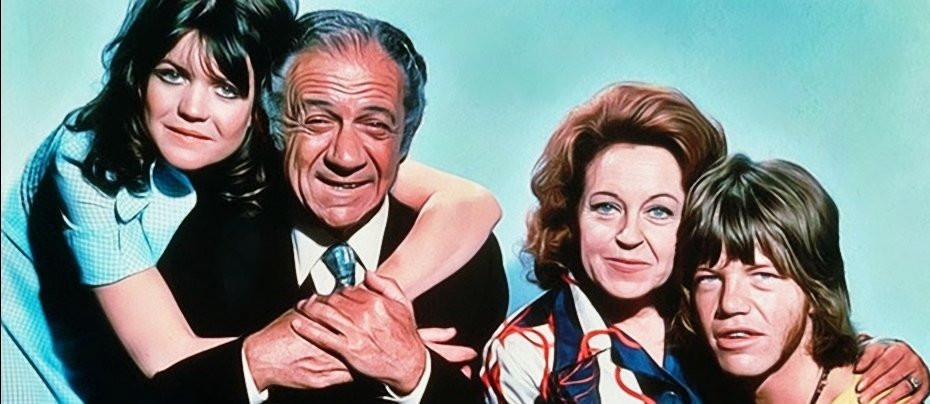
Carry On Cowboy
Review by John Winterson Richards
Like the first two historically themed Carry On films, the third, Carry On Cowboy, was less a satire on history than a satire on a specific historical film. So Carry On Jack was really a comic version of Captain Horatio Hornblower and Carry On Cleo an extended joke about the epic Cleopatra, while Carry On Cowboy owes a great deal to The Sheriff of Fractured Jaw, itself a light-hearted Anglo-American project that had, like Cleopatra, been filmed in part at Pinewood Studios, the base for the Carry On films.
Starring Kenneth More as a respectable English gunsmith who accidentally ends up bringing law and order to a violent Wild West cattle town, The Sheriff of Fractured Jaw also appears to be referenced in the much later Sir Norbert Smith: A Life with Harry Enfield. It is notable as one of the first Westerns filmed in Spain, where production moved after Pinewood - long before the Italians got there, except it was shot in Aragon in the North rather than in Andalusia which became the production venue for most Spaghetti Westerns.
The Kenneth More film was itself a British spin on what was then already a well-established, almost proto-feminist trope in which a male "tenderfoot" is schooled in the ways of the Wild West by a tough and more practically minded Western gal - Jayne Mansfield in The Sheriff of Fractured Jaw, which seems in turn to be referencing The Paleface and Son of Paleface starring Bob Hope and Jane Russell. These may themselves be influenced by the earlier Destry Rides Again, in which the tenderfoot, played by James Stewart, is not quite as helpless as he appears. Elements from all these films find their way into Carry On Cowboy.
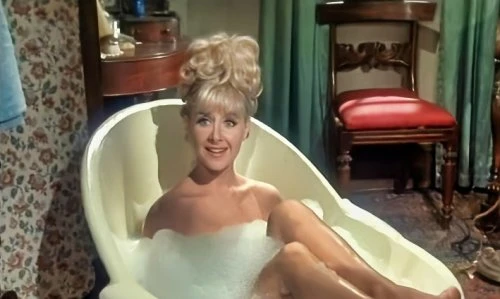
The strong female lead in Carry On Cowboy is played by the lovely Angela Douglas, the first of four occasions on which her entrancing eyes graced a Carry On. There was a certain irony in this because she was soon to marry Kenneth More. It is not for us to speculate on the extent to which the irony was deliberate. Suffice to say that she always brought a touch of class to her projects which was, if anything, slightly out of place with the vulgar tone of Carry On but no less welcome for that. Here it is used to particularly good effect: as with Amanda Barrie in Carry On Cleo, her air of innocence hides a ruthless competence.
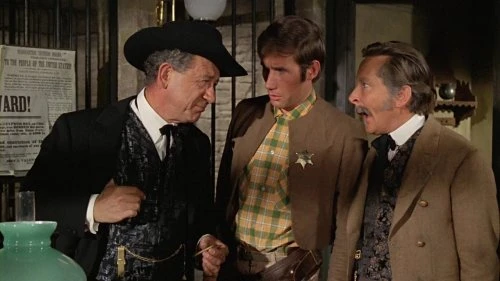
Jim Dale again assumes the heroic male lead following his success as such in Cleo, except here he is not quite so heroic. Instead of a high class gunsmith like More he plays a sanitary engineer and his determination to "clean up" a Wild West town leads to a misunderstanding which drives the plot - as does the fact that his first name happens to be Marshal.
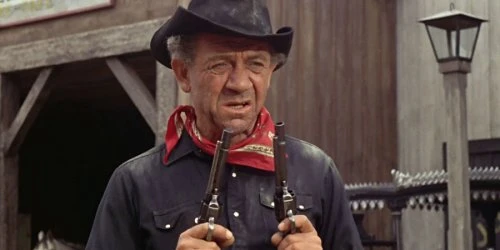
Sid James, in his early fifties at the time and looking it, plays The Rumpo Kid, the main reason the town requires cleaning up. James gets to use his American accent for the only time in a Carry On. Although he is famous primarily for his Cockney persona, James was no Londoner - having been born and raised in South Africa - simply a master of different accents of which the Cockney was just one. He had in fact played an American frequently in the long list of projects on his curriculum vitae before Carry On associated him forever with the Cockney Sid in the public mind.
By the time Carry On Cowboy was produced, that association was already well established through previous Carry On films and his work with Tony Hancock, but if this prompted any reservations about casting an actor with a definite contemporary image in "historical" roles, James overcame them simply by playing the same "Sid James Character" in all the different settings.

This was, of course, the standard Carry On operating procedure, and was also followed in Carry On Cowboy by Kenneth Williams as the local Mayor, Charles Hawtrey as an Indian Chief (glasses and all, a gloriously insane casting choice that works brilliantly), and Joan Sims as Rumpo's undeservedly loyal girlfriend.
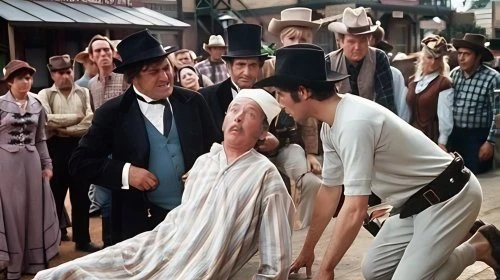
The film is also notable for the first appearances of two future Carry On regulars in supporting roles. Peter Butterworth was an old friend of writer Talbot Rothwell: they both got the showbusiness bug as prisoners of war when, together with future serious actor Rupert Davies (Maigret, Arthur of the Britons), they organised camp concerts to distract attention from escape attempts. Butterworth himself claimed that the audience's negative reaction to his performance covered the sound of men tunnelling. Having become a professional player after the War he was miffed when he was thought too unathletic to be cast in the film version of Eric Williams' The Wooden Horse as one of the men leaping over the eponymous object because he had been one of them in real life.
If Butterworth owed his part as the town physician to the POW old boy network, it was still justified because he is a perfect fit for the role. The other future regular, Bernard Bresslaw is less obvious casting as Charles Hawtrey's son, a not overly bright Indian brave. The Jewish Londoner was to go on to prove his versatility by playing a range of equally unlikely but memorable Carry On characters of notable ethnic diversity - which for that very reason would not be allowed these days.
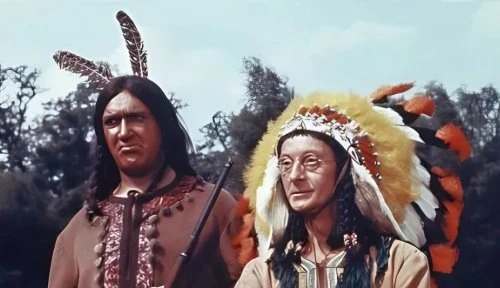
Both actors were nevertheless Carry On naturals from the start. Other familiar faces in the supporting cast include Jon Pertwee, Percy Herbert, Peter Gilmore, Davy Kaye, Sydney Bromley, Brian Coburn, Tom Clegg, Eric Rogers (the Carry On film's resident composer appearing on screen unbilled as a pianist), Richard O'Brien (also unbilled and possibly hard to spot), and Sally Douglas (no relation to Angela as far as we are aware) as an unfeasibly pretty squaw who cost Charles Hawtrey two buffalo robes and looked worth every hair.
The "historical" films brought a darker tone to the initially rather childlike Carry On series, and they got darker as they went on. In Carry On Cowboy - established, even amiable characters, not just extras, are killed on screen (true, Julius Caesar was stabbed in Carry On Cleo but that did not exactly come as a shock), and beneath the Sid James charm Rumpo is actually a psychopathic murderer whose notion of making a cash withdrawal from the bank involves shooting a cashier. Although the style of the production evokes classic American Westerns, there is sometimes a hint of Sergio Leone in the tone.
This may be part of the reason why, while Carry On Cowboy is generally respected by fans - and Kenneth Williams, a very severe critic of his own work, thought it one of the best in the series - it is not as beloved as Carry On Cleo or Carry On Up the Khyber. It is perhaps, if one can ever say this of a Carry On, a little too realistic, or at least it lacks the total commitment to the absurd that lifts the greatest films of the series to the sublime. Perhaps it might have been better if Sid James had used his Cockney accent after all.
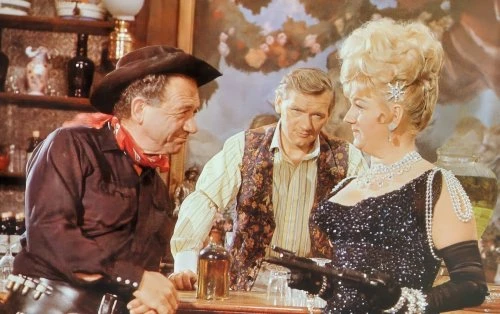
There is nevertheless still much to enjoy in Carry On Cowboy. Joan Sims, as a woman far more complex than the usual Carry On "nagging wife," gives one of her best performances. Hawtrey is allowed to go completely over the top, which is a good thing because they did not always know what to do with him. Dale and James are confident leading males. Douglas is a delight as always. Butterworth and Bresslaw earn their places in the classics that were to follow.
Published on April 9th, 2025. Written by John Winterson Richards for Television Heaven.


